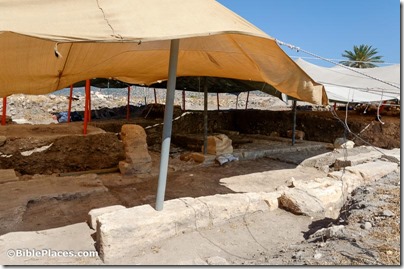A youth group working alongside archaeologists in Ibillin in northern Israel have uncovered a Canaanite fortress.
A pottery workshop from the Roman period has been excavated in western Galilee. High-res photos are available here.
After a four-year break, excavators are back at work at Tel Dan.
Jodi Magness provides an update on this summer’s excavations of Huqoq on The Book and the Spade.
Israel’s only mummy is now on display in a special exhibit at the Israel Museum that opened this week.
A project featuring ten mosaic replicas was unveiled in Jerusalem’s Cardo this week. A Jerusalem Post article indicates that the project will take a year to complete.
A group of Israeli archaeologists was attacked when touring the Temple Mount. The Temple Mount Sifting Project has a firsthand report.
Israel’s High Court is allowing the transfer of the ancient library at the Rockefeller Museum to the new IAA headquarters.
The Temple Mount Sifting Project is looking for help in identifying some of their finds.
Wayne Stiles explains the King’s Garden in Jerusalem, past and present.
CBD has a good deal going on the New Encyclopedia of Archaeological Excavations in the Holy Land. Get the original four volumes for $148, or get all five for $260. The update volume is available separately as well for $111. (Used sets at Amazon are a little more and new are $400+228.)
HT: Joseph Lauer, Agade


